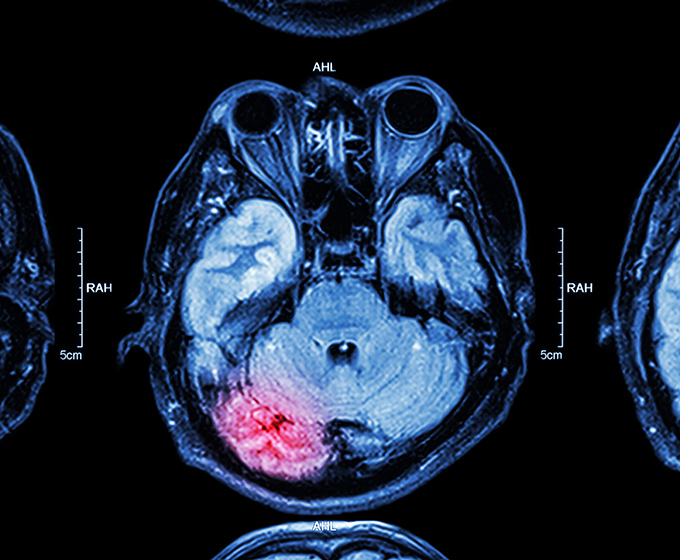
(July 22, 2019) – Epileptic seizures happen in one of every 10 people who have experienced a traumatic brain injury (TBI). However, new research at The University of Texas at San Antonio (UTSA) has uncovered an innovative approach to possibly slow the progression of epilepsy. Researchers at UTSA have successfully removed new neurons that have developed after a brain injury to reduce seizures in mice. They believe that the technique could potentially reduce post-injury epilepsy.
“We already know that new neurons contribute to epilepsy, but we didn’t know if we could target them post-injury, after seizures have already started,” said Jenny Hsieh, Semmes Foundation Chair and Professor in Cell Biology and Director of the UTSA Brain Health Consortium.
“Having the ability to do this would be clinically relevant, because the early warning signs of epilepsy are the seizures themselves.”
People who experience traumatic brain injury as a consequence of gun violence or automobile accidents are at higher risk of developing seizures. During a seizure there is a sudden abnormal electrical disturbance in the brain that results in various symptoms: strange movement of the head, body, arms, legs or eyes such as stiffening or shaking. Unresponsiveness and staring, chewing, lip smacking and even experiencing strange visual images are also indicative of a seizure.
According to the Centers for Disease and Control, TBI-related emergency department visits, hospitalizations and deaths have increased by 53%. Those who suffer a seizure a week after suffering head trauma are 80% more likely to suffer another post-trauma epileptic attack.
Seizures usually happen where there is a scar in the brain as a consequence of the injury. New neurons generated following a brain injury often do not migrate or develop normally. If left untreated, these cells may contribute to the development of epilepsy.
Hsieh and her colleagues at The University of Texas at San Antonio systematically removed new neurons that formed during the eight weeks following a seizure in mice. The UTSA team then monitored seizure activity in the mice and observed that the treated mice experienced a 65 percent reduction in seizures compared to untreated mice. This effect required more than four weeks of continuous treatment.
“Now we know we can remove new neurons after the initial seizures,” said Hsieh. “While we cannot stop the first seizures, we can try to prevent the secondary seizures. This is very exciting and may lead to new therapeutic strategies.”
Although these findings support a role for new neurons in the onset of epilepsy, they also suggest additional factors are involved.
“We found that once the treatment stopped, the seizure reduction was not permanent. This could be due to abnormal changes in the epileptic brain, such as chronic inflammation or reactive astrocytes, affecting the development of new neurons. We’re looking into those possibilities now,” said Hsieh.
This new finding is a collaboration between Professor Jenny Hsieh and Parul Varma at UTSA and researchers Rebecca Brulet and Ling Zhang at UT Southwestern Medical Center. The work was published recently in the acclaimed publication The Journal of Neuroscience.
Hsieh is the director of the UTSA Brain Health Consortium, a community of scientists seeking to understand the inner workings of the brain. This discovery on trauma-related epilepsy is an example of UTSA’s commitment to solve today’s most pressing health challenges.
Discover the UTSA Brain Health Consortium.
Learn more about Professor Jenny Hsieh.
Learn more about this study.
Celebrate UTSA’s 50th Anniversary and share social media posts about the 50th using the hashtag #UTSA50.
Connect with UTSA online at Facebook, Twitter, YouTube, Instagram and LinkedIn.
UTSA Today is produced by University Communications and Marketing, the official news source of The University of Texas at San Antonio. Send your feedback to news@utsa.edu. Keep up-to-date on UTSA news by visiting UTSA Today. Connect with UTSA online at Facebook, Twitter, Youtube and Instagram.
Move In To COLFA is strongly recommended for new students in COLFA. It gives you the chance to learn about the Student Success Center, campus resources and meet new friends!
Academic Classroom: Lecture Hall (MH 2.01.10,) McKinney Humanities BldgWe invite you to join us for Birds Up! Downtown, an exciting welcome back event designed to connect students with the different departments at the Downtown Campus. Students will have the opportunity to learn about some of the departments on campus, gain access to different resources, and collect some giveaways!
Bill Miller PlazaCome and celebrate this year's homecoming at the Downtown Campus with food, games, giveaways, music, and more. We look forward to seeing your Roadrunner Spirit!
Bill Miller PlazaThe University of Texas at San Antonio is dedicated to the advancement of knowledge through research and discovery, teaching and learning, community engagement and public service. As an institution of access and excellence, UTSA embraces multicultural traditions and serves as a center for intellectual and creative resources as well as a catalyst for socioeconomic development and the commercialization of intellectual property - for Texas, the nation and the world.
To be a premier public research university, providing access to educational excellence and preparing citizen leaders for the global environment.
We encourage an environment of dialogue and discovery, where integrity, excellence, respect, collaboration and innovation are fostered.